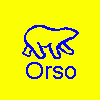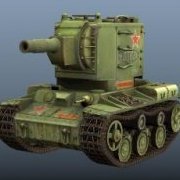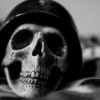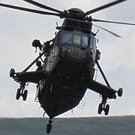Search the Community
Showing results for tags 'Opel Blitz'.
-
Build this severals years back, the only aftermarket parts used in the build are 3 PE clamps. Canvas tarp made from tissue paper. [/url]
- 39 replies
-
- 56
-

-
I finished another truck in Swedish WW2 era colours. I think it as 1/72 Roden kit. It has been unfinished so long that I've forgot.
-
One and a half year since I painted it and finally I managed to finish it. A civilian truck pressed in to military service. On my Scania Vabis I used a thin solder for the tubing of the gasifier and I decided to do the same here.
-
- 7
-

-
- Opel Blitz
- MAC
-
(and 1 more)
Tagged with:
-
I fancied something nice and quick after 4 tanks in a row, so dug this one out. I bought some Star Decals with big 'Rauchen Verboten!' warnings because they looked fun. Cab, chassis, covered load bed, dunkelgrau - what could go wrong? Two large sprues in a nasty dark grey plastic (hello 1970s!) and some really mad instructions with arrows all over the place somehow linking the parts together, Then I spent a good 30 minutes just looking at the cab parts and trying to get them to fit together and line up. Hmm. There's gonna be a few gaps. It's going to be draughty in there for poor old Hans! The doors are moulded into the cab sides, with a very thin section down the hinge joint. Apparently they can be opened up once the cab is assembled, and swung open "several times without breaking". It's going to be a different kind of fun to what I was expecting, but I'm sure it will go great. I might need to find better wheels. The tyres are rubber and only the front rims have 8 spokes, the rears are commercial 6 spoke ones. Perhaps that would be correct for an early one though. Wish me luck! I can't find any previous builds on here, just a few saying what a relief the Tamiya Blitz was after this effort. It can't be that bad though, it's just a cab and a chassis and a covered bed.
- 7 replies
-
- 6
-

-
- Opel Blitz
- Italeri
-
(and 1 more)
Tagged with:
-
Hello all Today a few pictures from a project I have been working on for a long time. My plan is to convert the W 39 as an early version into a tour bus of the artists for the troop support - therefore the title "Fronttheater". The Roden model is not that high in quality, but the price is 🤑 The entire conversion is not based on an existing vehicle but only on my imagination. For wartime use, vehicles were often converted to suit the needs, so in my opinion it is not unrealistic. Another interesting vehicle would be a workshop bus-but there are already a few of those. So now a tour bus-let it rock 😎 MD Modification of the wheel housing and new resin wheels the rear axle is lower to simulate weight Pictures of the inside will follow...
- 7 replies
-
- 13
-

-
- Opel Blitz
- Roden
-
(and 1 more)
Tagged with:
-

Tamiya 1/35 Opel Blitz, saved from the shelf of doom
Ned posted a topic in Work in Progress - Armour
I started this a good few months ago, and boldly/foolishly decided to include a driver figure to spice it up a bit. The truck sat with just the passenger door fitted while I tried to paint my first figure since the Airfix multipose ones about 40 years ago (and how good they were!) I just couldn't get the fleshtones right at all, so Jurgen ended up with a face only his mother could love and hair like custard. Off to the shelf of Doom! I had a JFDI moment on Saturday, so I got back to work and finished him off. The pictures don't do him justice, but at least he'll be stuck behind glass once the windscreen is on. I'm sure that Francois Verlinden started off in the same way. I have told myself that I will not have a Shelf of Doom. Only been back a few months and there's this Opel Blitz, an Sd.KFz. 222, and a Takom Hanomag SS100 that have been "put to one side". I'm taking myself in hand and sorting them out -
Hi all, would anyone have any reference material for the Opel Blitz being used in the SCW, would these have been painted in the early three tone camouflage or the generic field grey/green? Also the kit I'm planning on using would be: https://www.scalemates.com/kits/181439-icm-35401-typ-2-5-32-1-5to I know they were used quite widely by the Condor Legion but information is a little scarce
- 2 replies
-
- scw
- opel blitz
-
(and 1 more)
Tagged with:
-
Here's my take on a widely-used German truck. I chose to model one from the Polish campaign.
-
Dear fellow Britmodellers, this is Fujimi's 1/72 Opel Blitz Ambulance truck. Painted with Gunze/Mr.Hobby acrylics. Photographs by Wolfgang Rabel.
- 3 replies
-
- 9
-

-
- Opel Blitz
- Wehrmacht
-
(and 1 more)
Tagged with:
-
Ok so rather than Flooding the forum with a huge amount of new topics I'd just condense some of my favourite 1/16 models all done in the last 18 months. Theres a few more to come still!!! I've a Bulldog and tank transporter to detail and paint too.and will need to take some photos of my winter KV1 note the T34 interior was based on photos I took from inside one at a show that was happily driving around the arena... the amount of rust and paint flake has NOT been exaggerated 😳😳😳 album link as there are many more. https://flickr.com/photos/150255258@N02/sets/72157686523917386 Sorry so so many photos!!!
- 10 replies
-
- 5
-

-
- T34
- king tiger
-
(and 1 more)
Tagged with:
-
Hi all. With my Grizzly finished I decided to move to next project. This time I wanted to change something in my way of building models. Up to this point my modelling was pretty straight forward. Bulding, painting, filters, washes, oils, chippings, streakings, pigments. In the end I had a nice looking model, but it is not what I desire. I wanna do a little bit of storytelling with my work. I wanna build a vehicle (scaled) that has been somewhere. I also want to be more aware of what I'm doing and how that affects the whole project. That said, I wanna break down my weathering to smaller sections rather than do it on a whole model. That way I'll see the difference and possibly understand the WHY of using some method. Also, with every new model I want to try something new or do something old differently. The main topic of this project will be: WOOD. Painting and weathering wooden structures. To do this, I chose ICM's Opel Blitz type 2,5-32. Here's some pictures. The boxart. First of all, I'm not gonna use shelter as my Opel will be a little bit post-war. That's what's inside the box. Not too many parts and rubber tyres. There will be some additions. Let's get to work. The plastic is rather soft, so work goes nicely. There are a lot of small or thin parts though, so pay extra attention to cutting it. Chassis is quite detailed. I also started with interior. I broke down building stage to four stages and I do the separatly: engine, chassis, shelter's floor and cabin. Engine is quite hard to build as it consists of 21 parts. Interior is the first thing that's gonna see paint. First: the primer. Door with details. Pretty neat. Floor. Interior is quite simple. The seat needed to be roughened up a bit in my opinion, so I did some folded tarps. That's paper towels soaked in PVA glue and water mixture. First layer of paint: steel. After that I put some chipping fluid on which was followed by some dark grey colour. Next stage was chipping with a brush dipped in water. The same happened with the door. OK, that will be it for now. Thanks for watching. Dawid
- 12 replies
-
- 2
-

-
- Opel Blitz
- ICM
-
(and 1 more)
Tagged with:
-
A few quick builds this week to give my Mustangs and Fireflies something to aim at. Untitled by jongwinnett, on Flickr Untitled by jongwinnett, on Flickr Untitled by jongwinnett, on Flickr Untitled by jongwinnett, on Flickr As you can see, I couldn't resist tinkering a bit, so one Opel has had the tilt opened at the rear. My only other addition so far has been drive shafts: Untitled by jongwinnett, on Flickr These are very good value, three in a box (One 251 D still to build), quick and easy to put together, and a decent basic canvas for detailing if you want.
- 4 replies
-
- 2
-

-
- Plastic Soldier Company
- 1/72
-
(and 1 more)
Tagged with:







